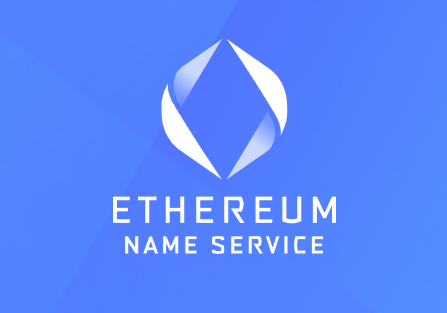The ABCs of ENS

One extremely important development that enabled mass adoption of the internet itself was the advent of the Domain Name System (DNS) which is a little like the phonebook for the internet. It made it possible to use human-readable domain names like WellBuilt.City or BikeShopTampa.com instead of the actual IP (Internet Protocol) addresses that our computers actually interact with. Humans have a very hard time with long nonsensical strings of alphanumeric addresses like 2400:cb00:2048:1::c629:d7a2 and if it wasn’t for DNS addresses it is unlikely that we would have seen the adoption that we have of the internet itself. Humans need there human-readable addresses to interact with and this same realization and logic has lead to the rise of ENS.
The Ethereum Name Service (ENS) is a distributed, open, and extensible naming system based on the Ethereum blockchain. ENS’s job is to map human-readable names like ‘WellBuiltCity.eth’ to machine-readable identifiers such as Ethereum addresses, other cryptocurrency addresses, content hashes, and metadata. In this example, if you wanted to contribute Ether to the WellBuilt City vision, you could send it to 0xa1f184E6740D654AF2FcB575cB94b8982f283A86 or simply use WellBuiltCity.eth and it will direct the funds to that alphanumeric address. ENS also supports ‘reverse resolution’, making it possible to associate metadata such as canonical names or interface descriptions with Ethereum addresses. That means that instead of seeing that long string of numbers in your dApp (decentralized application interacting with the blockchain),it will translate that into WellBuiltCity.eth.
ENS has similar goals to DNS but has significantly different architecture due to the capabilities and constraints provided by the Ethereum blockchain. Like DNS, ENS operates on a system of dot-separated hierarchical names called domains, with the owner of a domain having full control over subdomains. Top-level domains, like ‘.eth’ and ‘.test’, are owned by smart contracts called registrars, which specify rules governing the allocation of their subdomains. Anyone may, by following the rules imposed by these registrar contracts, obtain ownership of a domain for their own use. ENS also supports importing in DNS names already owned by the user for use on ENS.
Anyone who owns a domain at any level may configure subdomains - for themselves or others - as desired. For instance, if Rose owns 'rose.eth', she can create 'pay.rose.eth' and configure it as she wishes. If you are still able to grab your last name for example, you can then create subdomains for your whole family! If you own lastname.eth then you can make infinite versions of firstname.lastname.eth for all of your people. While it’s still very early in the space they may not make great Christmas gifts just yet but we have a feeling that your grandkids will one day be very happy you secured the family name before it was too late.
You can try ENS out for yourself now by using the ENS Manager App
If you register an ENS name now, we recommend adding at least 5 years to the registry as the lions share of the cost of transacting with the contract is gas and the longer you register it for the longer it will be before you have to renew and pay that gas again.
There is another way to grab your first ENS name that is quite a bit cheaper and will not necessitate adding years as these are permanent. You can register a subdomain at now.ens.domains. On this platform domains have been permanently committed to a smart contract so that the owner can sell subdomains to that address. Some of them are quite fun! For example, we registered Tampa.ismoney.eth. These addresses work the same as a parent address would and are a cheaper way to go if you need something quick.
Ethereum Name Service has also become a fully decentralized DAO that airdropped governance tokens to every address that held an ENS name towards the end of last year. While the tokens were very valuable and it served as a bit of a stimulus for many holders, it also corresponds to the amount of voting power each holder had to exercise or delegate. ENS token holders were given full responsibility to govern and care for this public good that was built and distributed in a way that embodies and demonstrated the potential and power of the Web3 dream of shared ownership and responsibility.
We would love to hear your experiences with ENS so far. Please respond to our newsletter and share your stories! Share your .eth names too!
